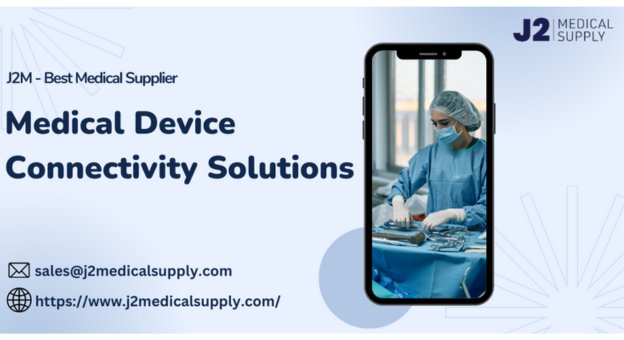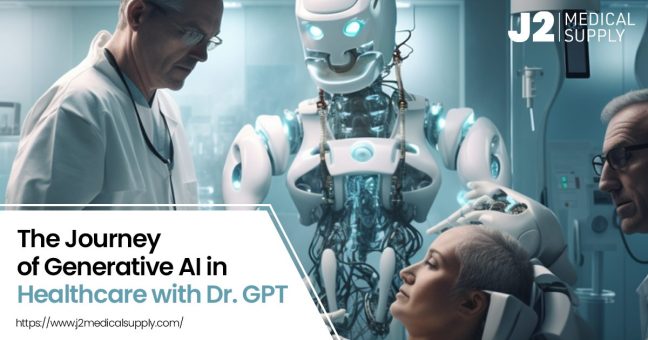In today’s rapidly evolving healthcare landscape, medical device connectivity solutions have become increasingly crucial. These innovative technologies enable seamless communication and data exchange between medical devices, healthcare providers, and patients. This article explores the significance of medical device connectivity solutions, their impact on healthcare, and the various factors to consider when implementing them.
Understanding Medical Device Connectivity Solutions
The advancement of technology has revolutionized the healthcare industry, and one of the key areas of transformation is medical device connectivity. Medical device connectivity solutions facilitate the transfer of data from medical devices to electronic systems, such as electronic health records (EHRs) and other clinical databases. This connectivity enhances patient care, enables real-time monitoring, and promotes efficient workflows.
Medical device connectivity solutions refer to the integration of medical devices with software applications and network infrastructure to enable seamless data exchange. These solutions utilize wireless technologies, internet connectivity, and specialized software interfaces to transmit and receive data from medical devices in real-time.
Importance of Medical Device Connectivity Solutions
The importance of medical device connectivity solutions cannot be overstated. These solutions enable healthcare providers to access accurate and up-to-date patient data, facilitating informed decision-making and personalized care. By connecting medical devices, clinicians can monitor patients remotely, track vital signs, and receive alerts in case of any abnormalities, ensuring timely intervention.
Enhancing Healthcare with Connectivity Solutions
● What are the Advantages of Medical Device Connectivity?
Medical device connectivity solutions offer numerous advantages. They enable healthcare providers to access real-time patient data, reducing the risk of errors and enabling proactive interventions. With connectivity, medical devices can transmit data directly to EHRs, eliminating the need for manual data entry and improving accuracy. This streamlined workflow saves time, enhances efficiency, and enables healthcare professionals to focus more on patient care.
● Improving Patient Care and Outcomes
Connectivity solutions play a pivotal role in improving patient care and outcomes. By integrating medical devices, healthcare providers can gain comprehensive insights into patient health trends, track disease progression, and identify patterns. This data-driven approach allows for timely interventions, preventing complications and improving patient outcomes.
● Streamlining Workflows and Efficiency
Medical device connectivity solutions streamline workflows, enabling seamless data flow between devices, healthcare providers, and other relevant stakeholders. By automating data collection and sharing, healthcare professionals can spend more time with patients and less on administrative tasks. This increased efficiency translates into improved productivity and a higher quality of care.
Addressing Security Concerns in Medical Device Connectivity
● Medical Device Cybersecurity in 2023
While medical device connectivity brings significant benefits, it also raises concerns regarding data security and patient privacy. With the increasing prevalence of cyber threats, ensuring medical device cybersecurity is paramount. Manufacturers and healthcare organizations must implement robust security measures to protect against unauthorized access, data breaches, and potential risks to patient safety.
● Wireless Device Design and Development
Wireless device design and development are crucial aspects of medical device connectivity solutions. Manufacturers need to incorporate robust security features during the design phase to safeguard against potential vulnerabilities. Implementing encryption protocols, authentication mechanisms, and regular software updates are essential to ensure the security and integrity of the connected medical devices.
● Ensuring Data Privacy and Protection
Protecting patient data privacy is a critical consideration in medical device connectivity. Healthcare organizations must comply with regulatory frameworks, such as HIPAA (Health Insurance Portability and Accountability Act), to ensure the confidentiality and integrity of patient information. Implementing data encryption, access controls, and secure transmission protocols are essential to safeguard sensitive medical data.
Integration and Interoperability
● Connecting Medical Devices to the Internet
Connecting medical devices to the internet allows for remote monitoring, data collection, and analysis. By integrating medical devices into a network infrastructure, healthcare providers can access real-time data from anywhere, enabling timely decision-making and proactive care delivery.
● The Role of IoT in Medical Device Connectivity
The Internet of Things (IoT) plays a vital role in medical device connectivity solutions. IoT technologies enable seamless communication between devices, data collection, and analysis. By harnessing the power of IoT, healthcare organizations can leverage connected devices to improve patient outcomes, optimize resource allocation, and drive operational efficiencies.
● Interoperability Challenges and Solutions
Interoperability challenges can arise when integrating diverse medical devices and systems from different manufacturers. Standardization efforts, such as the use of common communication protocols and data formats, are essential to ensure interoperability. Collaboration between stakeholders, adherence to industry standards, and robust integration frameworks can address these challenges and enable effective data exchange.
Future Trends and Opportunities
1- Advancements in Wireless Technologies
As technology continues to evolve, wireless technologies used in medical device connectivity solutions are becoming more advanced. The emergence of 5G networks, low-power connectivity options, and edge computing capabilities will further enhance the capabilities of connected medical devices, enabling faster data transmission and more efficient healthcare delivery.
2- The Rise of Digital Health Solutions
The rise of digital health solutions is transforming healthcare delivery. Medical device connectivity plays a crucial role in enabling these solutions by connecting wearable devices, remote monitoring systems, and mobile applications. This integration facilitates personalized healthcare, patient engagement, and the collection of real-world data for research and development purposes.
3- Integration with Electronic Medical Records
Integrating medical device connectivity solutions with electronic medical records offers significant benefits. Real-time data from connected devices can be seamlessly incorporated into patient records, providing a holistic view of a patient’s health. This integration streamlines clinical workflows, reduces errors, and enhances care coordination among healthcare providers.
Conclusion
In conclusion, medical device connectivity solutions are of paramount importance in modern healthcare. These solutions enhance patient care, improve outcomes, and streamline workflows. However, ensuring data security, addressing interoperability challenges, and staying updated with emerging technologies are essential considerations. By embracing medical device connectivity solutions, healthcare organizations can unlock the potential of connected healthcare, leading to more efficient and patient-centric care delivery. Explore the ever-evolving landscape of healthcare and stay informed on essential topics, including medical device connectivity solutions, by checking out J2 Medical Supply’s website.



